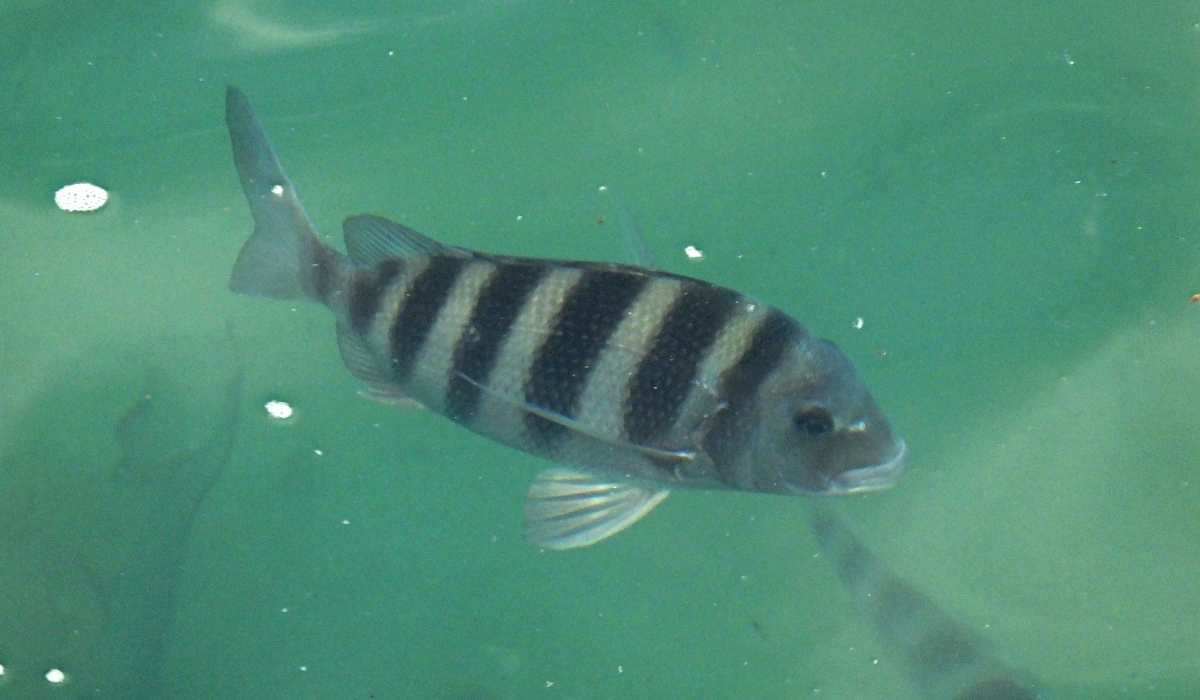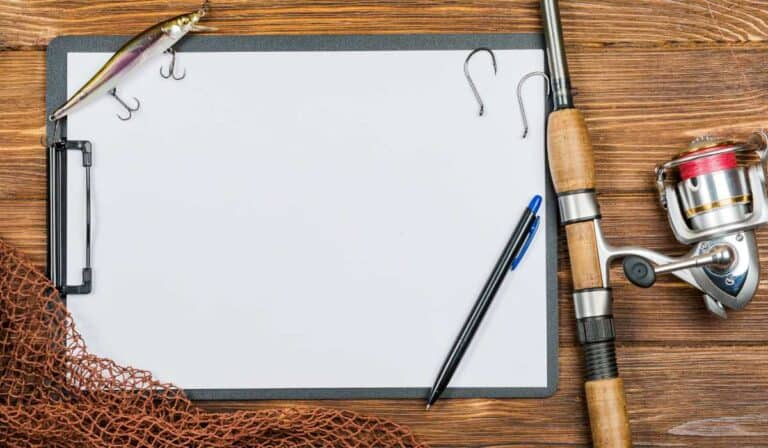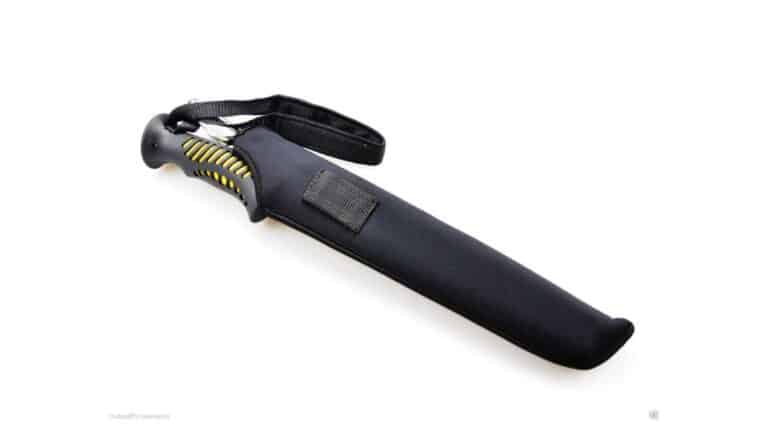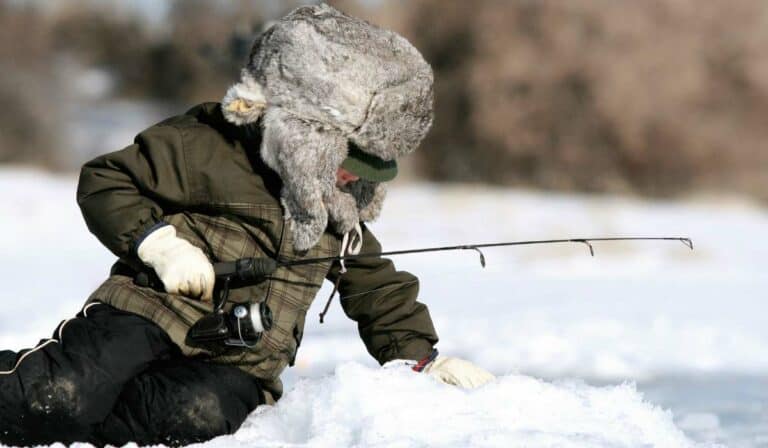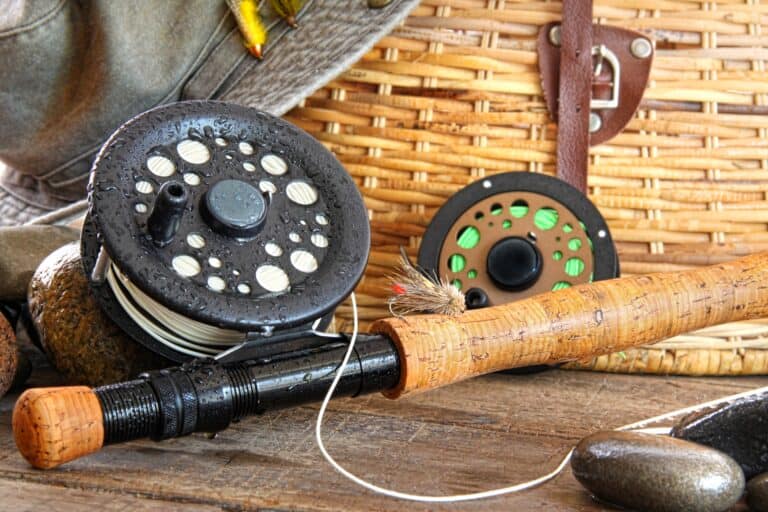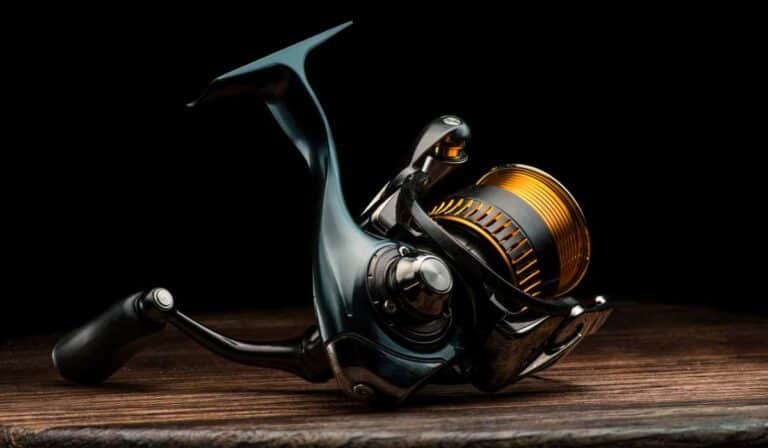Ultimate Guide To Fishing For Sheepshead
Welcome to our comprehensive Guide To Fishing For Sheepshead, where we will dive deep into the world of catching these fascinating fish. Known for their distinctive black and white stripes and strong teeth, sheepshead (also known as convict fish) is both challenging and rewarding to catch.
In this guide, you’ll learn about understanding sheepshead behavior and feeding patterns to increase your chances of success on the water. We’ll also discuss bait selection, including popular options like fiddler crabs and live shrimp that entice even the most cautious sheepshead.
As location plays a crucial role in targeting sheepshead, we will provide tips on finding prime fishing spots such as oyster beds or other structures they frequent. Moreover, our Guide To Fishing For Sheepshead covers rigging techniques like Carolina rigs that help you present your bait effectively while avoiding those notorious bait stealers.
Finally, once you’ve landed your prized catch, we’ll offer advice on cleaning and cooking methods to make the most out of your delicious sheepshead meal. So gear up with us as we explore this exciting aspect of angling together!
Table of Contents
1. Understanding Sheepshead
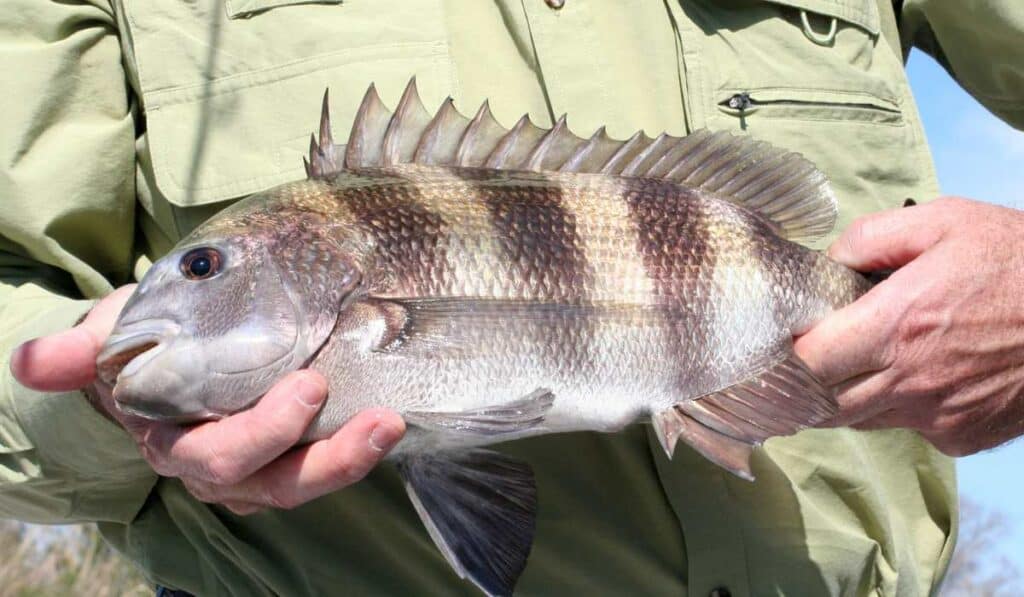
If you’re looking to have a fun and exciting fishing experience, targeting Sheepshead is an excellent choice. These fish, with their distinctive looks and challenging nature, are favored by anglers of all experience levels. In this section, we’ll cover the basics of Sheepshead, including their habitat, diet, and behavior.
Habitat: Where Do They Live?
Sheepshead (Archosargus probatocephalus) can be found along the Atlantic coast of North America from Nova Scotia down to Florida and throughout the Gulf of Mexico. Sheepshead (Archosargus probatocephalus) are typically located in shallow waters close to structures such as jetties, piers, bridges, reefs and oyster beds where they can find their favorite food sources like crustaceans and mollusks. For more information on their distribution range, visit the Florida Museum.
Diet: What Do They Eat?
- Barnacles: One favorite snack for these fish is barnacles that grow on pilings or rocks in coastal areas.
- Oysters & Clams: Oysters and clams are also high up on the menu list for sheepsheads due to their hard shells which help keep those teeth sharp.
- Fiddler Crabs & Shrimp: Small crustaceans like fiddler crabs or shrimp make easy prey as well; it’s not uncommon to see them rooting around in the sand searching out these tasty morsels.
Their Unique Appearance & Behavior
Sheepsheads are known for their unique appearance, featuring a broad body with dark vertical stripes and an unmistakable set of human-like teeth. These strong teeth allow them to crush the shells of their prey easily. They can be quite elusive and difficult to catch, which adds to the excitement when targeting these fish.
Now that you have a better understanding of Sheepshead, it’s time to dive into bait selection, location tips, rigging techniques, reeling in strategies, and how to clean & cook your catch. Stay tuned as we explore each aspect in detail throughout this SunWaterDirt.com guide.
Catching Sheepshead may prove difficult, but with the proper know-how and tactics you can up your odds of success. Bait selection is an important factor when it comes to fishing for Sheepshead, so let’s take a look at what bait works best for these finicky feeders.
Key Thought:
This section provides a guide to fishing for Sheepshead, including their habitat, diet and behavior. Sheepshead are known for their unique appearance with human-like teeth and can be quite elusive to catch, making them an exciting target among anglers of all skill levels. Stay tuned as we explore bait selection, location tips, rigging techniques and more in this SunWaterDirt.com guide.
Click here to read about The Best Wading Staffs for Fly Fishing
2. Bait Selection
Finding the perfect bait for Sheepshead fishing is crucial to your success and enjoyment of this outdoor adventure. Crustaceans, mollusks, and other invertebrates are Sheepshead favorites when it comes to bait selection. Let’s explore some top baits that will help you reel in these fascinating creatures.
Live Baits
- Fiddler Crabs: A favorite among Sheepshead anglers, fiddler crabs are a natural prey item for these fish. Simply hook them through the back or side using a small circle hook.
- Oysters & Clams: Freshly shucked oysters and clams make excellent bait as well. You can either use whole pieces or cut them into smaller chunks before threading onto your hook.
- Barnacles: Another great option is barnacles scraped from pilings or rocks along the shoreline – just be sure to handle them carefully as they can be sharp.
Artificial Baits
If live baits aren’t readily available, don’t worry. There are plenty of artificial options that work wonders when targeting Sheepshead:
- Sheepshead Jigs: These jigs mimic the movement of crustaceans and come in various shapes, sizes, and colors. Choose one with a realistic appearance to entice bites from hungry Sheepsheads.
- Crab Lures: Soft plastic crab lures offer a lifelike presentation that Sheepshead can’t resist. Rig them on a jig head or weighted hook for best results.
To ensure success, mimic the natural diet of your target species as closely as possible when selecting bait. Experiment with different baits until you find what works best in your area, and don’t be afraid to switch things up if one option isn’t producing bites.
In terms of bait for sheepshead, the kind used can vary based on your spot and the time of year. Now that we have discussed bait selection, let’s move onto some tips about where to fish for sheepshead.
3. Location Tips
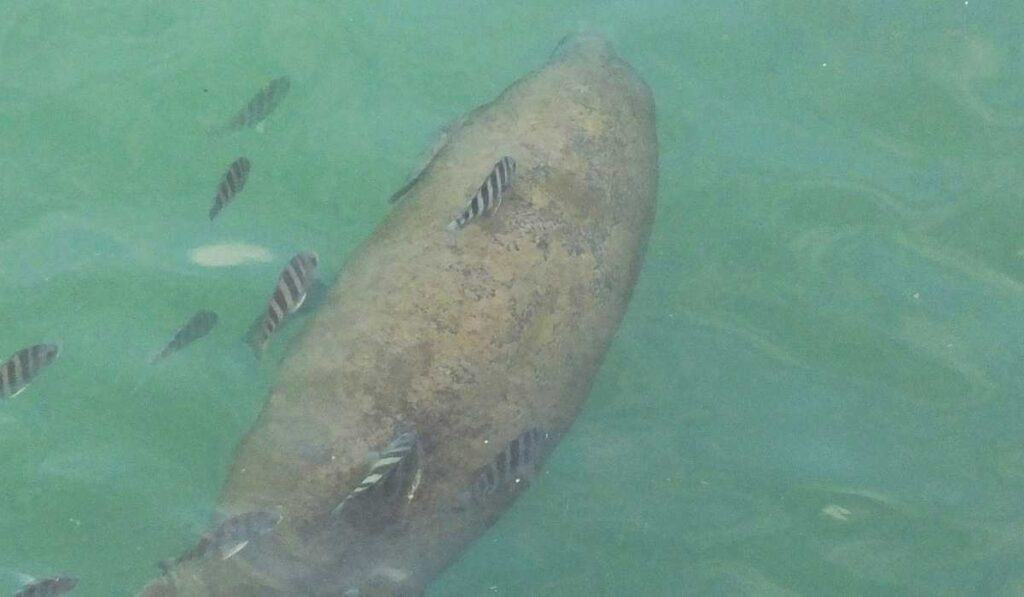
These fish, known for their spiritedness, can be found in various settings; being aware of where to look could significantly increase your chances of snagging one.
Around Structures
Sheepshead love hanging around structures such as piers, bridges, docks, and jetties because these areas provide ample food sources like barnacles, crabs, and shrimp. When fishing near these structures, be sure to cast close enough that your bait reaches their hiding spots but not too close that you risk getting snagged on the structure itself.
Inshore Reefs & Rock Piles
Inshore reefs and rock piles also attract Sheepshead due to the abundance of crustaceans living in these habitats. Look for areas with plenty of rocks or oyster beds where they can easily find their favorite meals.
Mangroves & Marshes
If you’re exploring mangrove forests or marshy areas along the coastlines, keep an eye out for Sheepshead feeding on small crustaceans among the roots and grasses. These locations offer excellent opportunities for sight casting if water clarity permits it.
Tidal Changes & Currents
- Incoming Tide: As tides rise, baitfish move into shallow waters which attracts hungry Sheepshead looking for a meal.
- Outgoing Tide: During outgoing tides, Sheepshead can be found feeding on crustaceans that are flushed out from their hiding spots.
- Currents: Pay attention to the currents as they can influence where Sheepshead will congregate. Fish tend to face into the current, so position yourself accordingly for a better chance at hooking one.
By understanding these location tips and being mindful of tidal changes and currents, you’ll greatly increase your chances of finding and catching Sheepshead on your next fishing adventure.
Location tips are essential for a successful fishing trip, as the right spot can mean all the difference. Now let’s explore a few strategies for setting up your gear to snag that prized fish.
Key Thought:
To catch Sheepshead, it’s important to know where to look. They can be found around structures like piers and bridges, inshore reefs and rock piles, mangroves and marshes, as well as being influenced by tidal changes and currents. By understanding these location tips you’ll increase your chances of a successful fishing trip.
Click here to read about The Best Trout Fishing in Maine
4. Rigging Techniques
Fishing for Sheepshead requires a specific rigging technique to increase your chances of success. In this section, we will discuss the essential components and steps to set up your line effectively.
A. Choosing the Right Tackle
Selecting the appropriate tackle is crucial when targeting Sheepshead. A medium-light spinning rod and reel combo with 10-20 lb braided line works well for these fish. Braided lines provide excellent sensitivity, allowing you to feel even the slightest nibble from a Sheepshead.
B. The Carolina Rig
The Carolina Rig is one of the most popular setups for fishing Sheepshead due to its simplicity and effectiveness in presenting baits naturally near structure where they reside. To create a Carolina Rig:
- Slide an egg sinker (1/2 oz – 1 oz) onto your mainline.
- Add a small plastic bead after the weight to protect your knot from abrasion by the sinker.
- Tie on a barrel swivel using an improved clinch knot or another strong knot of choice.
- Cut about 12-18 inches of fluorocarbon leader material (15-25 lb test).
- Tie one end of your leader material to the other side of your barrel swivel using another strong knot like Palomar Knot or Uni Knot.
- Attach an appropriately sized circle hook (#1 – #4) at the other end using snell knots which help keep bait presentation more natural.
Now you have a Carolina Rig set up and ready for baiting.
C. Bait Presentation
The key to success when fishing for Sheepshead is presenting your bait naturally. When using live or fresh baits like fiddler crabs, shrimp, or oysters, make sure to hook them in a way that allows them to move freely without falling off the hook during casting.
For example, when using fiddler crabs as bait:
- Pierce the crab’s shell from one side of its body through the other with your circle hook.
- Make sure not to puncture any vital organs so it remains alive and active on your line.
A well-presented bait will entice even the most cautious Sheepshead into biting.
Rigging techniques are a crucial part of fishing for Sheepshead and must be mastered to ensure successful catches. With the right technique in hand, you can now move on to learning how to reel them in.
Key Thought:
To fish for Sheepshead, one must choose the right tackle such as a medium-light spinning rod and reel combo with 10-20 lb braided line. The Carolina Rig is an effective setup that allows natural bait presentation near structures where Sheepshead reside. A well-presented bait can entice even the most cautious Sheepshead into biting.
5. Reeling In
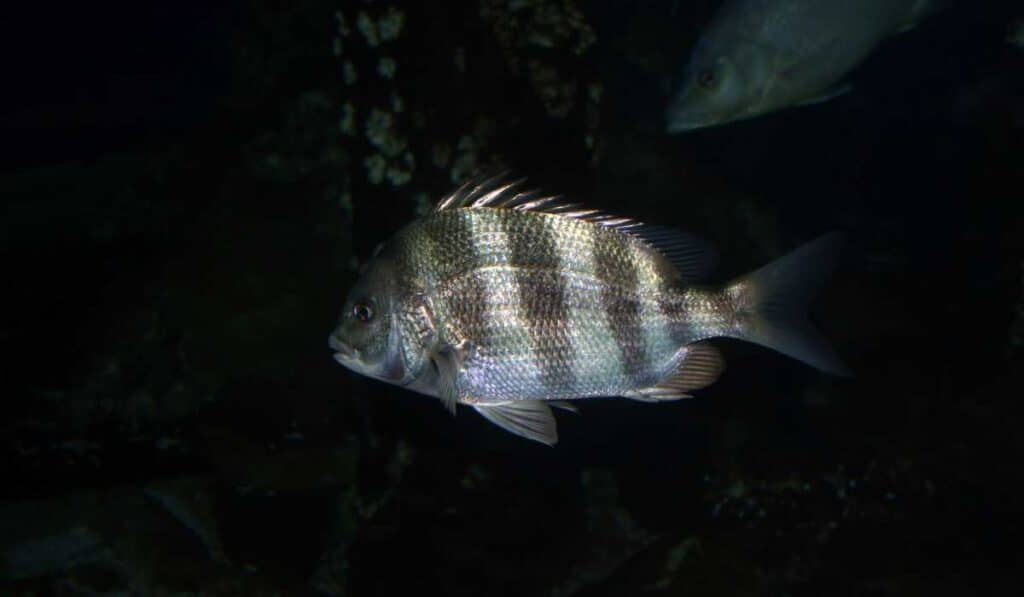
Fishing for Sheepshead can be an exhilarating experience, especially when you feel that first tug on your line. To ensure a successful catch, it’s essential to master the proper techniques for reeling in these feisty fish. Let’s dive into some tips and tricks to help you land your next Sheepshead.
Setting the Hook
The first step in reeling in a Sheepshead is setting the hook. These fish have strong jaws and teeth designed for crushing shells, so they may not always take the bait aggressively. When you feel a nibble or tap on your line, give it a quick but firm jerk upwards to set the hook securely in their mouth.
Maintaining Tension
Once hooked, maintaining tension on your line is crucial as Sheepsheads are notorious escape artists. Keep constant pressure by pulling up with your rod tip while simultaneously reeling down toward the water. This technique helps prevent any slack from forming and allows better control over the fish during retrieval.
Battling Techniques
- Pump & Reel: As mentioned earlier, use short pumps of your rod followed by quickly winding down toward water level – this keeps steady pressure on Sheepshead without giving them room to maneuver.
- Avoid Overexertion: Don’t force too much power into each pump; instead, focus on smooth movements that tire out these stubborn fighters gradually.
- Navigating Obstacles: Be prepared for sudden dives or dashes around structures like pilings or rocks – stay alert and be ready to adjust your rod angle accordingly.
Landing Your Catch
As you bring the Sheepshead closer, it’s time to prepare for landing. Use a landing net or lip gripper to secure your catch while minimizing stress on both you and the fish. Keep practicing and don’t be disheartened if you’re not successful right away – with time, your technique will improve.
Reeling in the catch of a lifetime is an unforgettable experience that will stay with you for years to come. The next step, however, is learning how to properly clean and cook your freshly caught sheepshead – something we’ll be covering in our upcoming section.
Key Thought:
To reel in a Sheepshead, it’s important to set the hook firmly and maintain tension on your line. Use short pumps of your rod while reeling down towards the water to tire out these stubborn fighters gradually, and be prepared for sudden dives or dashes around obstacles like pilings or rocks.
Click here to read about The Best Trout Fishing Rods
6. Cleaning & Cooking
Congratulations on your successful Sheepshead fishing adventure. Now it’s time to enjoy the fruits of your labor by learning how to properly clean and cook this delicious fish. Follow these simple steps, and you’ll be savoring a tasty meal in no time.
A. Cleaning Your Catch
- Scaling: Start by scaling the Sheepshead using a fish scaler or the back of a knife. Make sure to remove all scales for a smooth texture when cooked.
- Gutting: Using a sharp fillet knife, make an incision from the anus up towards the head along its belly. Remove all internal organs and rinse thoroughly with cold water.
- Filleting: Lay the fish on its side, and starting at the tail end, cut down until you reach its spine. Turn your knife horizontally and slice along both sides of its backbone until you have two separate fillets (here is an excellent guide). Don’t forget to remove any remaining bones.
B. Cooking Methods
The mild flavor and firm texture of Sheepshead make it perfect for various cooking methods such as grilling, baking, frying or even steaming. Here are some popular options:
- Grilled Sheepshead with Lemon Herb Marinade: This recipe highlights fresh flavors that complement this white-fleshed fish perfectly.
- Crispy Pan-Fried Sheepshead: For a quick and easy meal, try pan-frying your fillets in a light batter for a crispy, golden crust.
- Baked Sheepshead with Tomatoes and Onions: This healthy baked option combines fresh vegetables with the savory flavors of garlic and white wine.
Now that you’ve mastered the art of cleaning and cooking Sheepshead, it’s time to gather friends and family around the table to enjoy this delicious seafood treat. Happy eating.
Click here to read about Ultimate Guide to Alaska Fly-In Fishing Trips
FAQs Fishing for Sheepshead
What is the secret to catching sheepshead?
The secret to catching sheepshead lies in using the right bait, such as live shrimp or fiddler crabs, and targeting their preferred habitats like rocky structures, piers, and bridges. Patience and a sensitive touch are also crucial for detecting their subtle bites.
What is the best fishing line for sheepshead?
The best fishing line for sheepshead is a braided line with 10-20 lb test strength. Braided lines offer better sensitivity to detect light bites and provide excellent abrasion resistance against sharp rocks or barnacles where these fish often reside. Pair it with a fluorocarbon leader for added invisibility underwater.
How do you fish for sheepshead?
– Select appropriate bait like live shrimp or fiddler crabs
– Target locations near structures such as piers, jetties, or reefs
– Rig your hook with a Carolina rig or drop-shot setup-
– Maintain patience while waiting for subtle bites from these elusive
fish
– Gently set the hook when you feel a bite before reeling in steadily
What is the best month to catch Sheepshead?
Sheepshead fishing is best during the winter months when they move inshore to spawn. However, they can be caught year-round in areas with suitable habitats and food sources.
When targeting sheepshead, it’s important to understand their feeding behavior. These “convict fish” have a set of teeth that are perfect for crushing hard-shelled prey like crabs and barnacles. They also have a keen sense of smell and can detect prey from a distance.
One effective way to catch sheepshead is by using a Carolina rig with a small hook and a weight heavy enough to keep the bait on the bottom. This rig allows for a natural presentation of the bait and helps to detect subtle bites. Another popular rig for sheepshead is the drop shot rig, which suspends the bait above the bottom and can be effective in areas with lots of bait stealers.
When it comes to bait, live shrimp and fiddler crabs are the top choices for sheepshead. These baits can be fished whole or cut into smaller pieces to entice feeding. Sheepshead also feeds on oysters, so fishing around oyster beds can be productive.
Overall, targeting sheepshead requires patience, finesse, and the right gear. With the right approach, you can catch these elusive fish and enjoy a delicious meal.
Conclusion
In conclusion, the guide to fishing for sheepshead is an excellent resource for anyone looking to catch this elusive fish. By understanding their feeding habits and habitat preferences, selecting the right bait, choosing the perfect location, rigging your line correctly, and reeling in with care, you can have a successful day on the water. Don’t forget to clean and cook your catch properly for a delicious meal.

